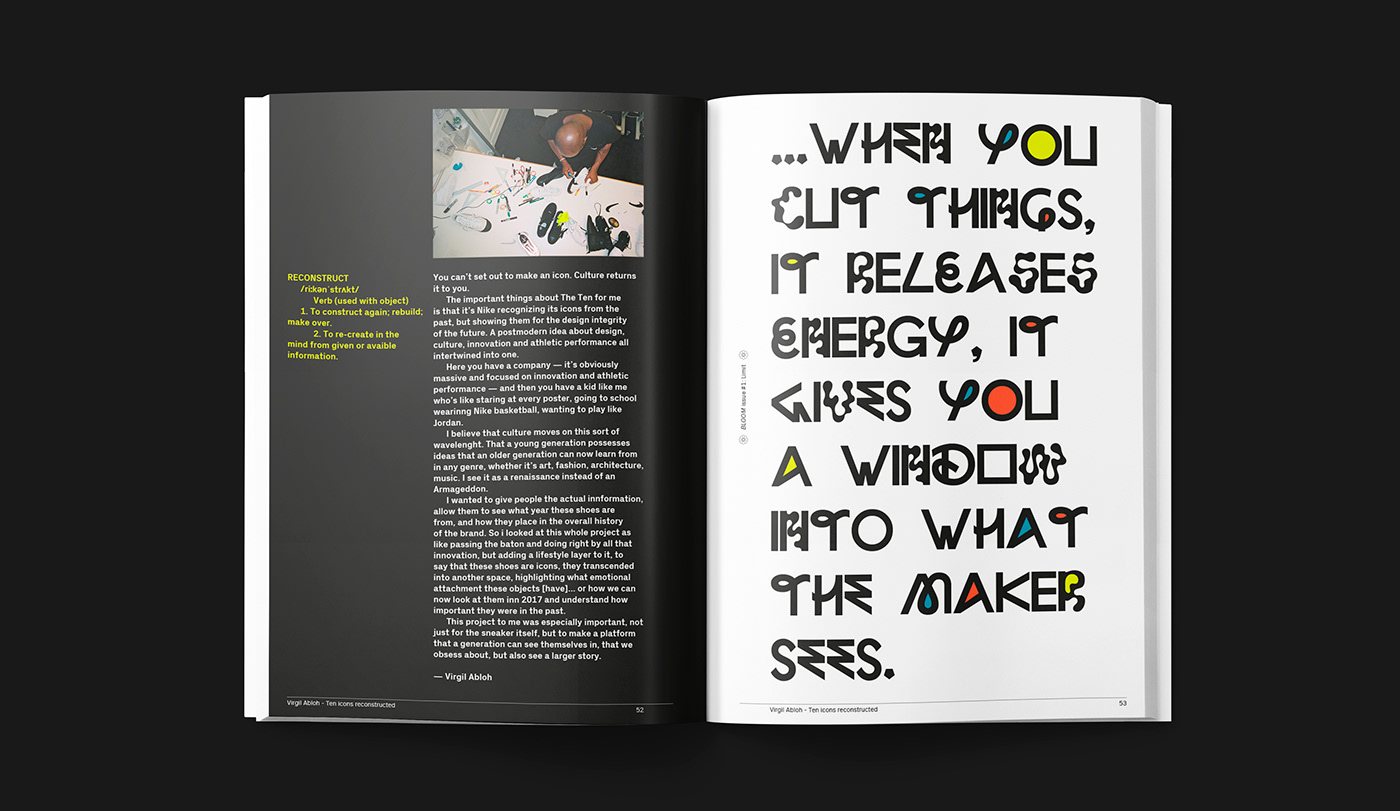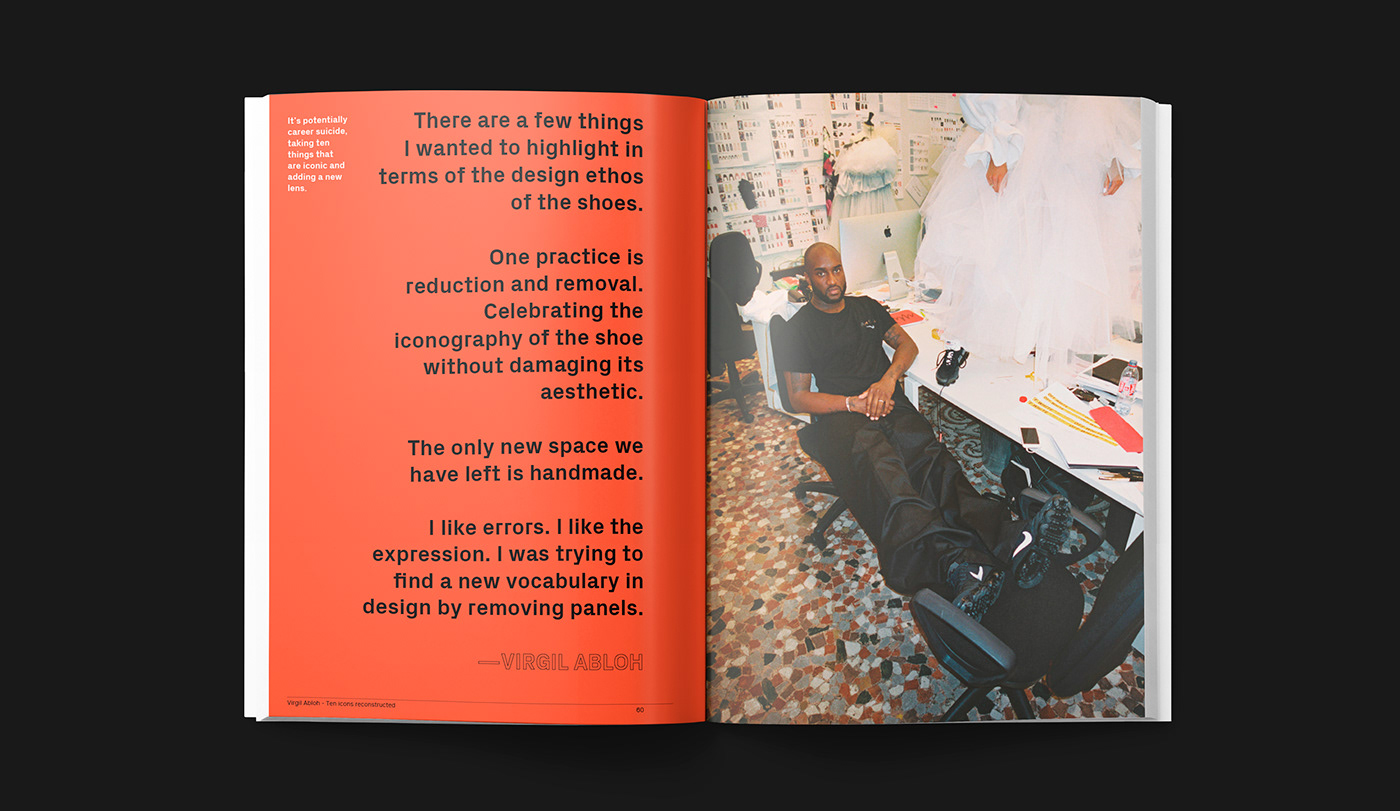
Bloom, issue #1: Limit
(2018)
Some pages I designed for a bigger project called Bloom.
Beyond rational and irrational analysis, systems and rules, clients and limits, I believe that to define the figure of the visual designer, we must dwell on the modus pensandi even before the modus operandi. It makes the interpretation of design meanings absolutely authentic and allows us to adapt to the continuous evolution of society and technology. The project aims to demonstrate this hypothesis through an editorial format focused on people.
“There are numerous ways to tell the same story; everything you need is to change, even slightly, the point of view.”



A rectangle of 34 x 24 cm containing precisely 816 square centimeters of possibility, made from two sheets of paper glued and bound together. Legendary magazine art director and Pentagram partner D. J. Stout calls the science of filling this box with artful compositions of type and images “variations on a rectangle.” That is, in any given issue of a magazine—this one, for example—subjects and stories will change, but as a designer, you’re still dealing with the same ol’ blank white box.



On every editorial page, we use words and pictures to overcome the particular restrictions of paper and ink: we can’t animate the infographics (yet), we can’t embed video or voice-over (yet), we can’t add sound effects or music (yet). But for all that we can’t do in this static medium, we find enlightenment and wonder in its possibilities. This is a belief most designers share. In fact, the worst thing a designer can hear is an offhand “Just do whatever you want.” That’s because designers understand the power of limits. Constraint offers an unparalleled opportunity for growth and innovation.


Think of a young tree, a sapling. With water and sunshine, it can grow tall and strong. But include some careful pruning early in its development—removing low-hanging branches—and the tree will grow taller, stronger, faster. It won’t waste precious resources on growth that doesn’t serve its ultimate purpose. The same principle applies to design. Given fewer resources, you have to make better decisions.



For proof, just consider these cultural and technological high points of the last century: Piet Mondrian helped usher in modernism by limiting himself to 90-degree angles and primary colors. Miles Davis conceived Kind of Blue without the use of a single chord. More recently, the very iPhone on which you listen to Davis’ landmark album is a one-buttoned example of restraint in pursuit of an ideal, while the sublimely simple Google homepage is forever limited to 28 words.



“The more a person limits himself, the more resourceful he becomes. A solitary prisoner for life is extremely resourceful; to him a spider can be a source of great amusement.”
Thank you!
And best wishes from Italy








